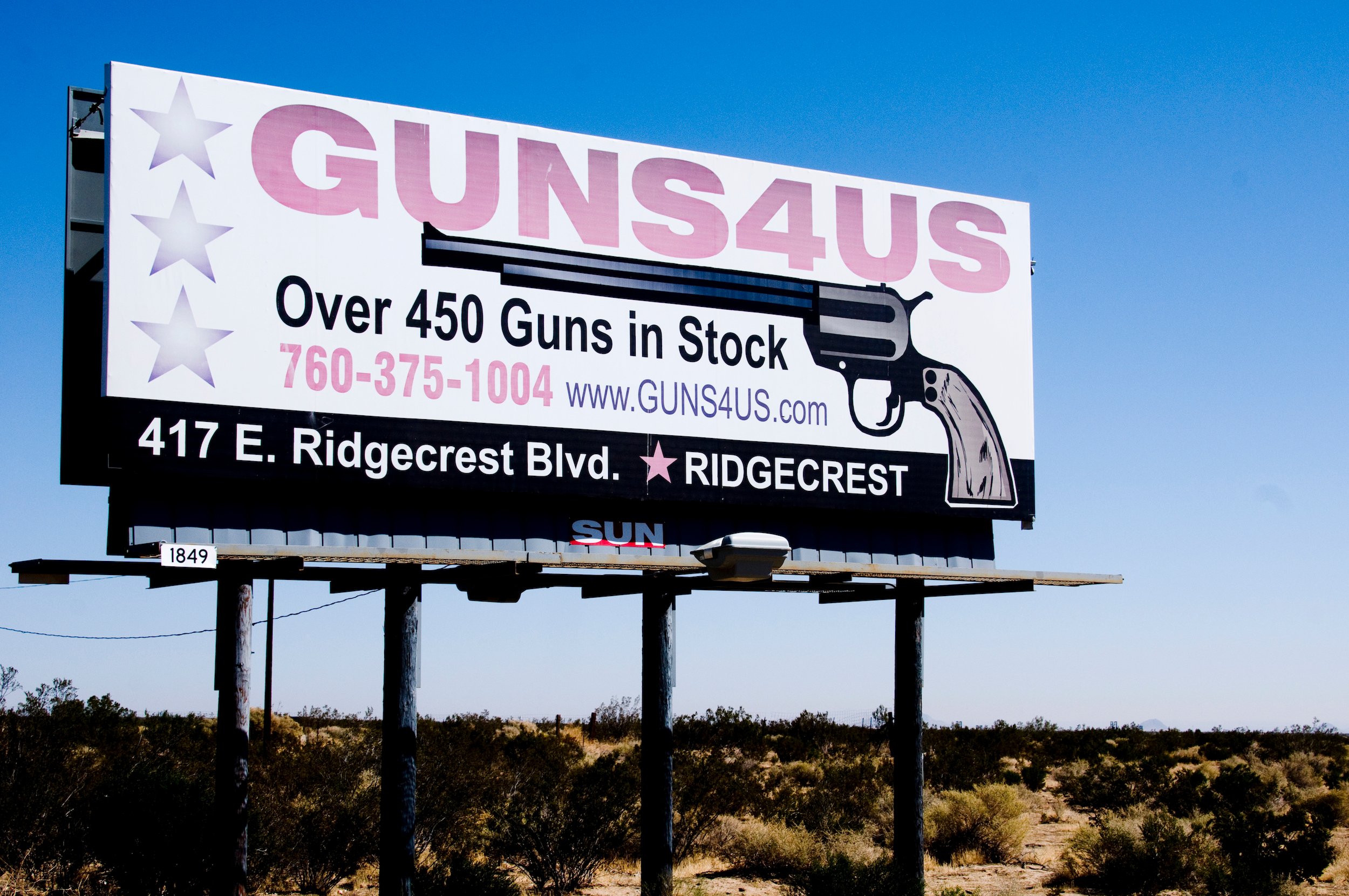Turn on the television today or scroll through social media, and you’re likely to see an endless stream of advertisements promoting everything from regional grocery store chains to retractable patio awnings. Beyond a handful of conspicuous absences — cigarette companies, for example, have not been permitted to advertise without graphic warnings in the U.S. since the 1980s — Americans see thousands of ads per day, featuring most every product or service available to consumers.
Guns, however, present an unusual exception to this rule. The weapons are, per the tireless advocating of the industry’s powerful interest groups, designed for Americans of every stripe. “Americans from all backgrounds and demographics agree that gun ownership is a common right that transcends politics and demographics,” reads a recent press release from the industry’s trade association, the National Shooting Sports Foundation. No federal law prohibits firearm manufacturers from advertising their products. And yet, you are unlikely to ever see an ad for a gun on a billboard, on national television, or on your preferred social media app.
A reader wanted to know: Why is this? Why don’t gun manufacturers advertise more ubiquitously, if they think their market should include every law-abiding citizen in the country? The answer has to do with a consensus among private companies that gun advertisements are dangerous, and a pivot by the industry toward quieter, grassroots marketing strategies.
Are gun companies allowed to advertise on TV and social media?
This is perhaps the most straightforward explanation for the dearth of firearm advertising in Americans’ daily lives: The largest television providers and social media companies have implemented explicit bans on firearm sales and marketing on their platforms.
On the television side, Comcast Corporation, the nation’s largest cable operator, joined Cox Communications and Time Warner Cable after the 2013 Sandy Hook massacre in prohibiting advertisements promoting guns or gun sales. Gun manufacturers still regularly advertise on local television stations where allowed, and have attempted, at times, to reach a national audience. In one infamous example, the rifle manufacturer Daniel Defense’s 2014 Super Bowl ad proposal was rejected because of the NFL’s policy banning firearms and ammunition advertisements during games. The company had planned for the rejection, and used it to drive a firestorm of news coverage.
On social media, X (formerly Twitter), Meta (formerly Facebook, which owns Instagram), and YouTube all have policies forbidding the advertising or sale of weapons. Major gun companies still have social media accounts, which they use to announce new product offerings and to provide technical descriptions of their weapons — a form of advertising, in a sense. But policies prohibit these companies from posting sales links or paying for ads on the platforms.
Does it even make sense for gun companies to buy big national ads?
Guns are a polarizing subject in the U.S. — according to Pew Research, about two thirds of the country does not own a gun, and roughly half of that population says they could never see themselves owning one in the future. Such widespread opposition makes paying for expensive national advertising campaigns riskier.
The situation isn’t helped by historically meager profits in the gun industry. Margins on guns are slim, meaning firearms companies’ returns fall far short of those from many conventional national advertisers like name brand alcoholic beverage brands. Revenues also rely heavily on rapidly changing political headwinds that have tanked gun businesses in the past: In 2016, when Donald Trump pulled off a surprise election victory over Hillary Clinton, several wholesale distributors that had anticipated a groundswell of demand for guns during a Clinton presidency were suddenly stuck with a glut of product. Ellett Brothers, then one of the nation’s largest firearm distributors, could not move their products quickly enough and went bankrupt.
According to attorney Joshua Koskoff, this financial precarity has pushed the industry toward more carefully targeted ads for specific demographics. Koskoff represented families of Sandy Hook shooting victims in a lawsuit against the gunmaker Remington Arms that focused on the company’s marketing tactics. He says that social media influencers and industry magazines, both of which attract a particular audience already interested in guns and the lifestyle that surrounds them, offer lower-risk-higher-reward spaces for the industry to promote their wares.
Wait — so there are gun influencers?
There are a lot of them.
A sprawling network of influencers — including military veterans, demolition experts, gun rights activists, and professional shooters — have built large audiences specifically interested in firearms and gun culture. According to a 2020 report from the defense, weapons, and firearms marketing group Danger Close, the top 40 gun industry influencers across Facebook, Instagram, YouTube, and Twitter that year boasted between 400,000 and 10 million followers each.
Shifting toward subtler, grassroots marketing campaigns enables gun companies to both dodge the platforms’ ad policies and reach younger, more impressionable audiences, Koskoff said. “Advertising is so much more decentralized today than it was once upon a time,” he told The Trace. “Until the advent of the internet these companies had to market their products through parents — now that’s changed.”
The change has been a boon. Kyle Clouse, the head of marketing at the gun safe company Liberty Safe, referred to industry influencers as “the goose laying the golden egg” for the firearms industry in a 2019 interview with Vox. Their work keeps the companies top-of-mind for a target audience who might not otherwise see traditional advertisements published in industry magazines.
The Federal Trade Commission requires that sponsored content contain disclosures identifying it as paid marketing, but influencers often disregard that requirement, according to reporting from Salon and Adweek. This pattern has attracted the attention of prominent gun safety groups: In 2021, Everytown and Brady updated a year-old complaint to the FTC about Smith & Wesson’s marketing practices, alleging that the company had violated the commission’s endorsement guides by paying influencers who omitted necessary disclosures. The complaint is still pending. (Through its nonpolitical arm, Everytown provides grants to The Trace. You can find our donor transparency policy here, and our editorial independence policy here.)

